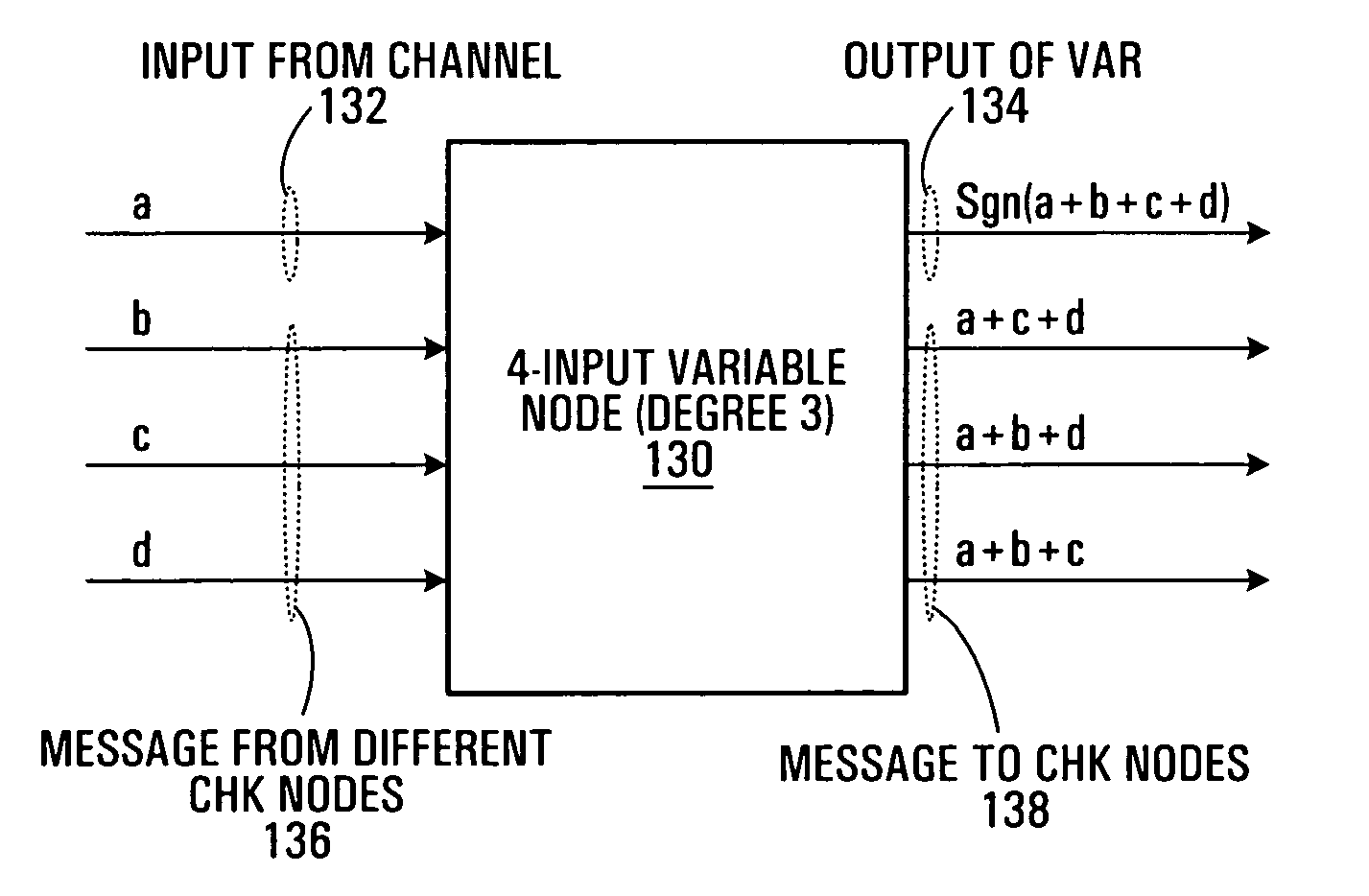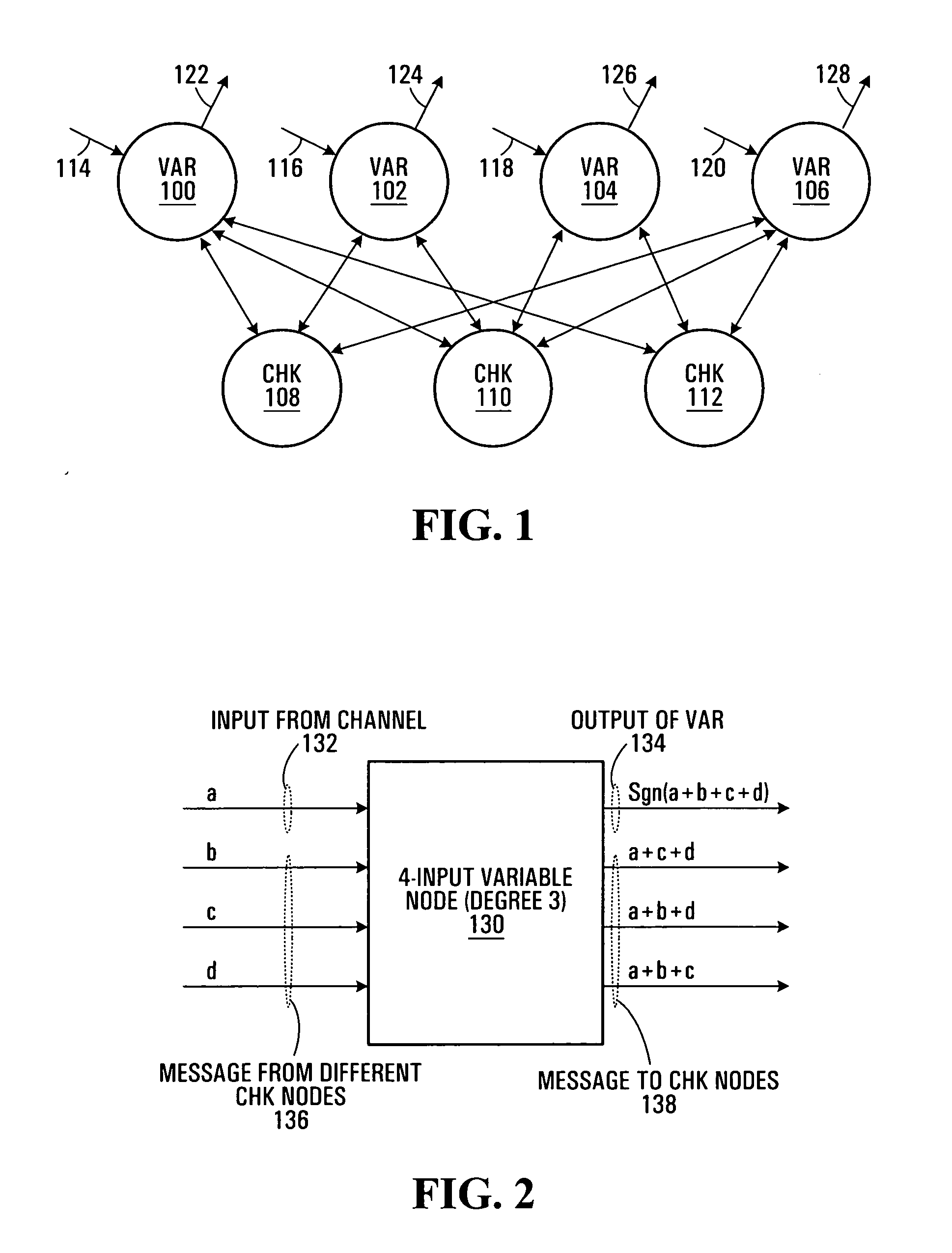Full CMOS min-sum analog iterative decoders
an iterative decoder and full cmos technology, applied in analogue computers, instruments, analog and hybrid computing, etc., can solve the problems of high complexity, high cost, and difficult implementation of a large number of high-precision digital multipliers, and achieve the effect of simple design and low fabrication cos
- Summary
- Abstract
- Description
- Claims
- Application Information
AI Technical Summary
Benefits of technology
Problems solved by technology
Method used
Image
Examples
Embodiment Construction
Min-Sum Decoding Algorithm
[0071] To explain the min-sum algorithm, binary LDPC codes will be considered together with the bipartite graph that represents the code through its parity-check equations, referred to as a “Tanner graph”. See for example Tanner, R. M., “A recursive approach to low-complexity codes,” IEEE Trans. Inform. Theory, vol. 27, pp. 533-547, September 1981.
[0072] There are two sets of nodes in a Tanner graph: 1) variable nodes representing code bits, and 2) check nodes representing parity-check equations. To implement the min-sum algorithm in such a graph, two types of computational modules are required: one for variable nodes (VAR) and the other for check nodes (CHK). The operations performed in VAR and CHK modules depend on the representation of soft information (messages that are passed among CHK and VAR nodes through edges).
[0073] Referring first to FIG. 1, shown is an example of a Tanner graph. This Tanner graph has four VAR nodes 100, 102, 104, 106 and thr...
PUM
 Login to View More
Login to View More Abstract
Description
Claims
Application Information
 Login to View More
Login to View More - R&D
- Intellectual Property
- Life Sciences
- Materials
- Tech Scout
- Unparalleled Data Quality
- Higher Quality Content
- 60% Fewer Hallucinations
Browse by: Latest US Patents, China's latest patents, Technical Efficacy Thesaurus, Application Domain, Technology Topic, Popular Technical Reports.
© 2025 PatSnap. All rights reserved.Legal|Privacy policy|Modern Slavery Act Transparency Statement|Sitemap|About US| Contact US: help@patsnap.com



